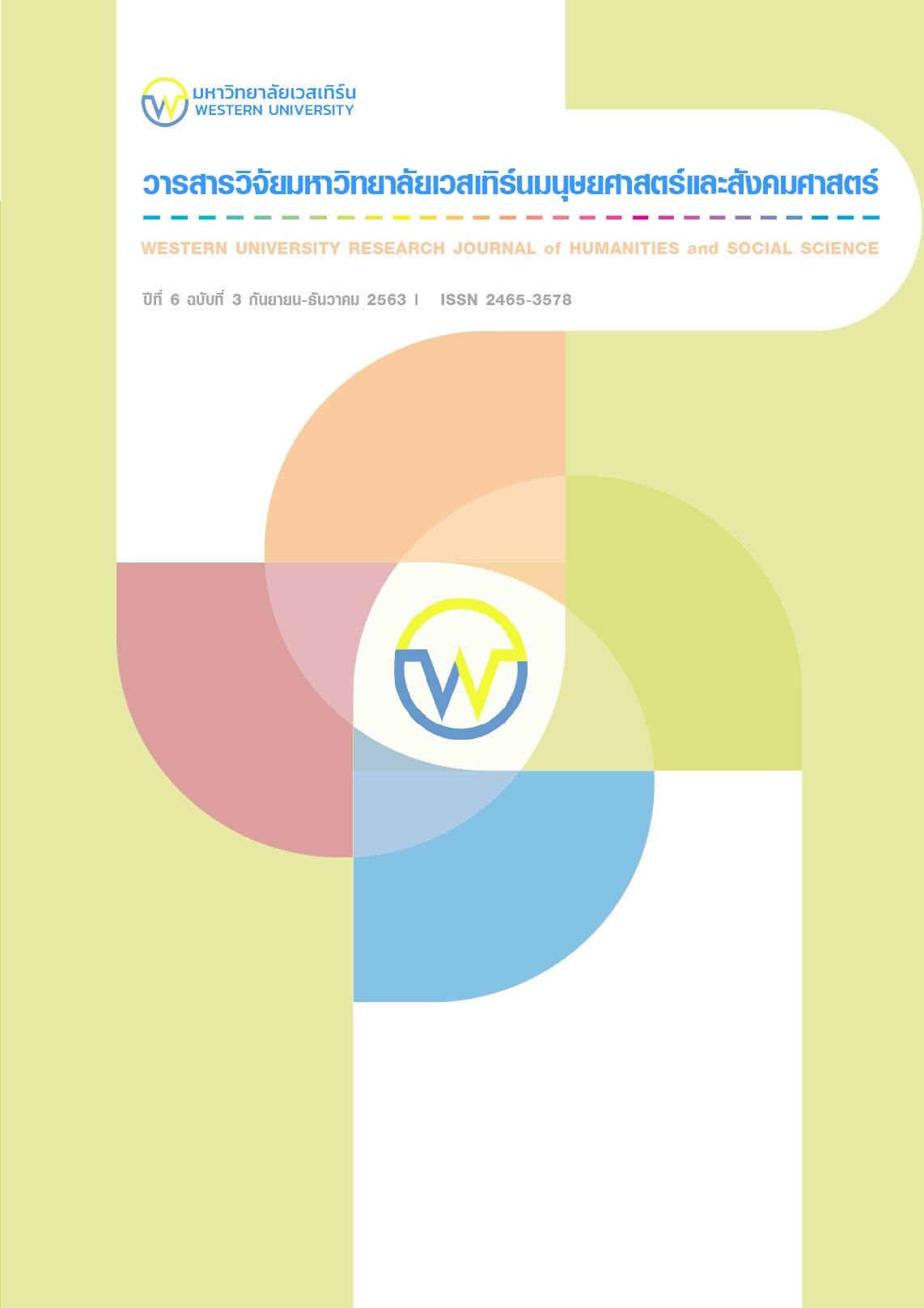The Model Development for Promoting Personnel’s Quality of Life Under Institute of Physical Education
Main Article Content
บทคัดย่อ
The objectives of the model development for promoting personnel’s quality of life under Institute of Physical Education were 1) to study the management conditions of personnel’s quality of life under Institute of Physical Education, 2) to develop a model for promoting personnel’s quality of life and to analyze by each aspect, and 3) to compare the personnel’s quality of life among 8 campuses. Data were collected from personnel among 8 campuses. Krescie and Morgan's formula was used to obtain the sample size, for a total of 226 respondents. Instruments used were a questionnaire and focus group discussion. The data were analyzed by frequency, percentage, means, standard deviation, and t-test. The data from the focus group discussion were analyzed by using content analysis. The results were as follows: 1. Results of the management conditions of personnel’s quality of life, the existing practice was overall at a high level and the necessary conditions for promoting personnel’s quality of life were overall at a high level and higher than the existing practice. 2. Results of a model development for promoting personnel’s quality of life from the focus group discussion consisted of eight components: physical, mental, emotional, social, intellectual, environmental, sufficiency economy, and self-perception of health aspect, and all aspects were at the development level. The analysis results of comparison in pairs between the existing practice and the necessary conditions of activities in terms of physical, mental, emotional, social, environmental, and self-perception of health aspect were statistically significant differences at .05 level but in terms of intellectual and sufficiency economy aspect were not different. 3. Results of comparison in pairs for promoting personnel’s quality of life under 8 campuses in each aspect, there were statistically significant differences at the .05 level.
Article Details
เอกสารอ้างอิง
Health Information System Development Office – HISO. (2005). Thailand Health Profile 2005-2007: Chapter 7 Protection of Thailand’s Health System. Retrieved March
19,2019, From https://www.hiso.or.th/hiso/picture/reportHealth/THF2007/THP2005_8eng.pdf.
Jariyawat Kompayak. (2006). The Factors relating to the health promotion behavior of families in the community of Mahanaak Canal Sub district by Pomprapsattrupei
area. Bangkok.
Kaleta, D, et, al. (2009). Factors Influencing Self-perception of Health Status. Retrieved March 12, 2019, From https://www.researchgate.net/publication/40728100_Factors _Influencing_Self-perception_of_Health_Status.
Kamtorn Promsophi. (2007). Health behavior. Retrieved March 12, 2019, From www.http://snr.ac.th/elearning/kamtorn/profile.htm.
Krejcie, R. V. & Morgan, D. W. (1970). Determining Sample Size for Research Activities. Educational and Psychological Measurement, 30(3), pp. 607-610.
Office of the National Economic and Social Development Board, Office of the Prime Minister Bangkok, Thailand. (2017). Twelfth National Economic and Social Development Plan (2017-2021). Retrieved March 12, 2019, From http://plan.bru.ac.th/แผนพัฒนาเศรษฐกิจและสังคมแห่งชาติ-ฉบับที่-12.
Pender, N.J. (2016). Pender’s Health Promotion Model. Retrieved March 12, 2019, From https://www.nursing-theory.org/theories-and-models/pender-health-promotion-model.php.
Royal Thai Government Gazette. (2001). Health Promotion Foundation Act, B.E. 2544 (2001). Retrieved March 12, 2019, From http://web.krisdika.go.th/data/law/law2/%A1109/%A1109-20-9999-update.htm.
Royal Thai Government Gazette. (2007). National Health Act, B.E. 2550 (2007). Retrieved March 12, 2019, From http://www.web.krisdika.go.th/data/law/law2/%CA71/%CA71-20-9999-update.pdf.
Statista Research Department. (2018). Thailand: How many hours a week do you exercise/participating in sport activities?. Retrieved March 12, 2019, From
https://www.statista.com/statistics/562572/thailand-number-of-hours-spent-on-exercise-participating-in-sport-activities.
Sudyod Chomsahai. (2003). The model of health promotion for the personnel of the institute of physical education. Institute of Physical Education, Chiang Mai campus
Watabe, A. et al. (2016). Analysis of health promotion and prevention financing mechanisms in Thailand. [Retrieved March 12, 2019, From http://www.ihppthaigov.net/DB/publication/attachinter/294/Full-text.pdf
World Health Organization (WHO). (2016). What is health promotion. Retrieved March 12, 2019, From https://www.who.int/features/qa/health-promotion/en


